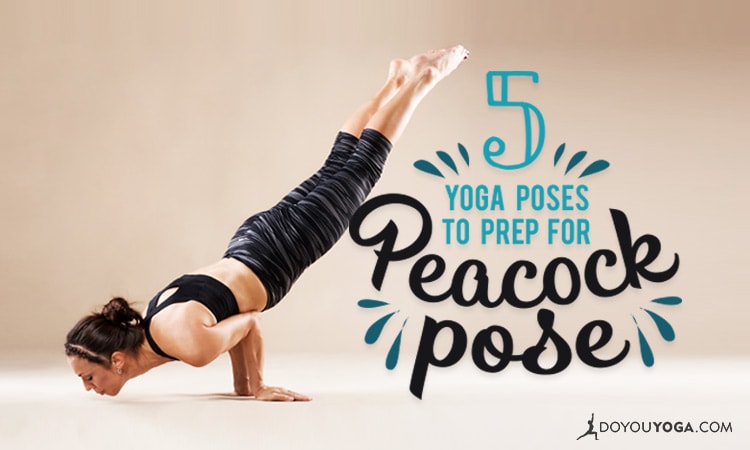Like its namesake, Peacock pose (Mayurasana) is a beautiful and regal posture. But, unlike its namesake, which appears to show its beauty effortlessly, Mayurasana is far from an effortless posture.
Still, with practice and proper preparation, you will be able to show off your feathers and feel confident when you do. Here are five poses to get you ready for Peacock pose:
1. Chaturanga Dandasana
You know Chaturanga as a posture that you flow through in a vinyasa or as a way to lower yourself to the ground, but Chaturanga is also a great way to build the arm and core strength needed for Peacock pose.
To get the most out of it as a preparation, hold a plank pose while you draw your navel toward your spine, and draw the top of your head and heels in opposite directions.
Slowly bend your elbows, keeping them close to your sides, and lower your body toward the earth until you’re hovering just above your mat. From there, you can lower completely, or move into upward dog, or another posture.
As you lower yourself, it’s important to keep your body straight and not let your midsection collapse.
2. Salabhasana
 Credit: Julia Lee
Credit: Julia LeeIn order to hold yourself in Peacock pose, you’re going to need a strong back and hamstrings. Salabhasana, or Locust pose, works those much needed muscles.
Lie on your stomach with your arms over your head and your legs straight behind you. You have numerous versions to choose from. Lift your right arm and left leg, then switch sides, or lift both arms and both legs. You can also keep your arms along your side and lift just your legs.
Whichever you choose, hold for four to five breaths, relax, and repeat.
3. Gomukhasana
The arm position in Cow Face pose is a great way to open the shoulders, chest, and back for Mayurasana.
Sit either with your legs crossed with one shin in front of the other, or cross one leg over the other with your knees stacked. In this case we’re more concerned about the upper body than the lower.
Lift your right arm straight overhead, then bend the elbow to reach your fingertips down the middle of your back. Then reach behind you with your left arm, working to grasp you fingertips. If they don’t reach, use a belt or strap to shorten the distance.
Breathe deeply as you feel your shoulders open and release. Hold for eight to ten breaths, then switch sides.
4. Urdhva Dhanurasana
Peacock pose requires putting your wrists in an unusual position. You can loosen your wrists just by rotating them or by sitting in thunderbolt (sitting on your knees, butt on your heels), and pressing your hands into your thighs, fingertips facing your body.
Or, you can do a full wheel. In this posture, your hands are turned in the awkward direction needed for Peacock. By pressing the pads of your hands and your fingertips into the earth during Wheel, you’ll gain the wrist strength you need for Peacock.
5. Balasana (modified)
Child’s pose is usually considered a resting pose, but it can be a preparatory pose too.
Sit on your knees with your butt on your heels. Make fists with both hands and place them in the creases of your hips. Fold forward so your fists press into your abdomen. Not only will this help with digestion, but it will prepare your abdomen to support you in Mayurasana.
Child’s pose is also a good way to open the back for Peacock pose.
Keep in mind that while these poses will help build strength and flexibility to help you get into Mayurasana, it’s still a challenging pose. Have fun as you practice the posture, and in time you’ll find the strength, balance, and flexibility to show off your tail feathers.






